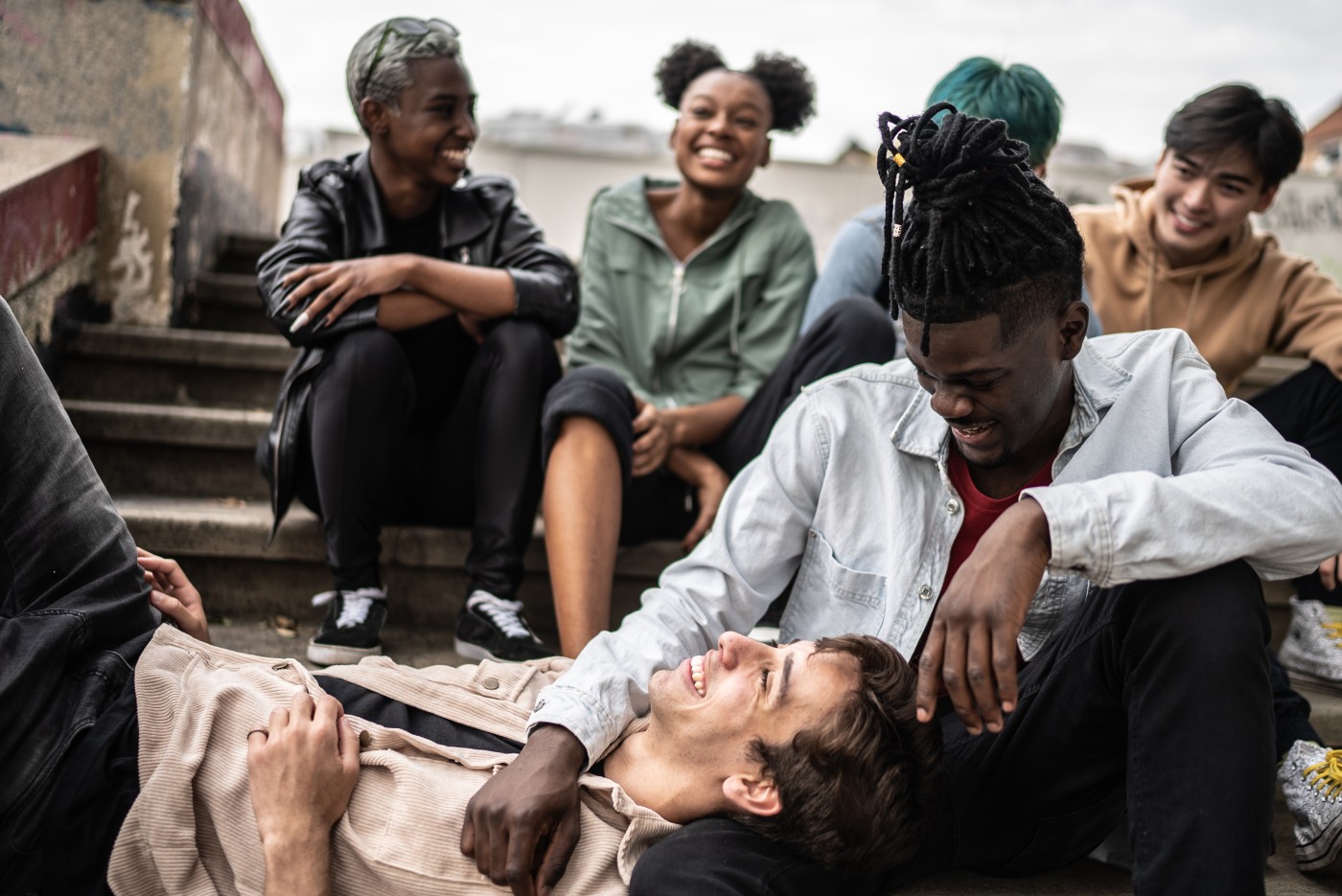Más Cerca: Getting Closer to LGTBQIA+ Latines

Latino/a. Latinx. Latine. Regardless of which term you use, this group represents a large swath of the American population: 18.9%, to be exact.1 On the other hand, Getty Images' VisualGPS research shows us that only about 12% of popular visuals of people from 2022 feature Latines. Of those visuals, only 1% feature LGBTQIA+ folks. This disparity is substantiated when we look at our search data: in 2022 there were no searches for LGBTQIA+ Latine folks.2 It is imperative, especially during Pride month, to share some ways to authentically capture the LGBTQIA+ Latine audience.
Move past limiting gender stereotypes
Machismo within the Latine community specifically limits the emotional spectrum of LGBTQIA+ folks in favor of a stoic and problematic expression of masculinity. It seems that brands are also challenging the macho stereotype through their visual choices: when it comes to displays of emotion or visuals of domestic life, men are featured prominently (45% and 48%, respectively), upending more traditional notions of manhood. However, despite assumed straight men being given access to a broader range of expression, gay men account for less than 1% of the top Latine visuals.3 This creates a unique problem: while men broadly benefit from the improving effects of machismo, gay Latines still seem to be left out of that progress.
Move past limiting gender stereotypes
Machismo within the Latine community specifically limits the emotional spectrum of LGBTQIA+ folks in favor of a stoic and problematic expression of masculinity. It seems that brands are also challenging the macho stereotype through their visual choices: when it comes to displays of emotion or visuals of domestic life, men are featured prominently (45% and 48%, respectively), upending more traditional notions of manhood. However, despite assumed straight men being given access to a broader range of expression, gay men account for less than 1% of the top Latine visuals.3 This creates a unique problem: while men broadly benefit from the improving effects of machismo, gay Latines still seem to be left out of that progress.
Show togetherness
VisualGPS research tells us that “spending more time with family/friends/loved ones” is one of the most important things to Latines. Relatedly, the topic of chosen family is a cornerstone of the queer experience, specifically for Black and/or Latine queer folks ‑ look no further than New York City’s ballroom scene to understand that importance.4 Brands also stress this need for chosen family: while 32% of the top visuals of Latines feature groups of people, that number skyrockets to 75% when Latine trans folk are featured.5 This signals the importance of family—born or chosen—to this community. Brands should consider visualizing LGBTQIA+ Latines in community with other people to reflect this crucial aspect of their livelihood.
Highlight the breadth of the trans experience
While trans people are well‑represented in visuals of groups of Latines specifically, that seems to be the only place where they are represented: trans people only make up 1% of Latine visuals overall. This lack of inclusion, also seen in the Asia‑Pacific region,6 results in a very limited representation of the trans experience. For example, only 5.8% of trans Latine visuals take place at home or at the doctor.7 This visibility gap also exists in the media industry where there was a 25% decrease in trans TV characters in the 2022‑2023 season.8 It is therefore important in this moment that brands continue to show nuanced trans stories.
These are just some ways to better represent the LGBTQIA+ community through visuals. For more guidance, check out our LGBTQIA+ Guidebook, in partnership with GLAAD.
While trans people are well‑represented in visuals of groups of Latines specifically, that seems to be the only place where they are represented: trans people only make up 1% of Latine visuals overall. This lack of inclusion, also seen in the Asia‑Pacific region,6 results in a very limited representation of the trans experience. For example, only 5.8% of trans Latine visuals take place at home or at the doctor.7 This visibility gap also exists in the media industry where there was a 25% decrease in trans TV characters in the 2022‑2023 season.8 It is therefore important in this moment that brands continue to show nuanced trans stories.
These are just some ways to better represent the LGBTQIA+ community through visuals. For more guidance, check out our LGBTQIA+ Guidebook, in partnership with GLAAD.
Works Cited
[1] US Census Bureau Quick Facts
[2] Getty Images VisualGPS
[3] Getty Images VisualGPS
[4] Inside New York's underground ballroom scene
[5] Getty Images VisualGPS
[6] LGBTQ+ Visibility in the Asia Pacific
[7] Getty Images VisualGPS
[8] GLAAD Where We Are On TV Report
[1] US Census Bureau Quick Facts
[2] Getty Images VisualGPS
[3] Getty Images VisualGPS
[4] Inside New York's underground ballroom scene
[5] Getty Images VisualGPS
[6] LGBTQ+ Visibility in the Asia Pacific
[7] Getty Images VisualGPS
[8] GLAAD Where We Are On TV Report


